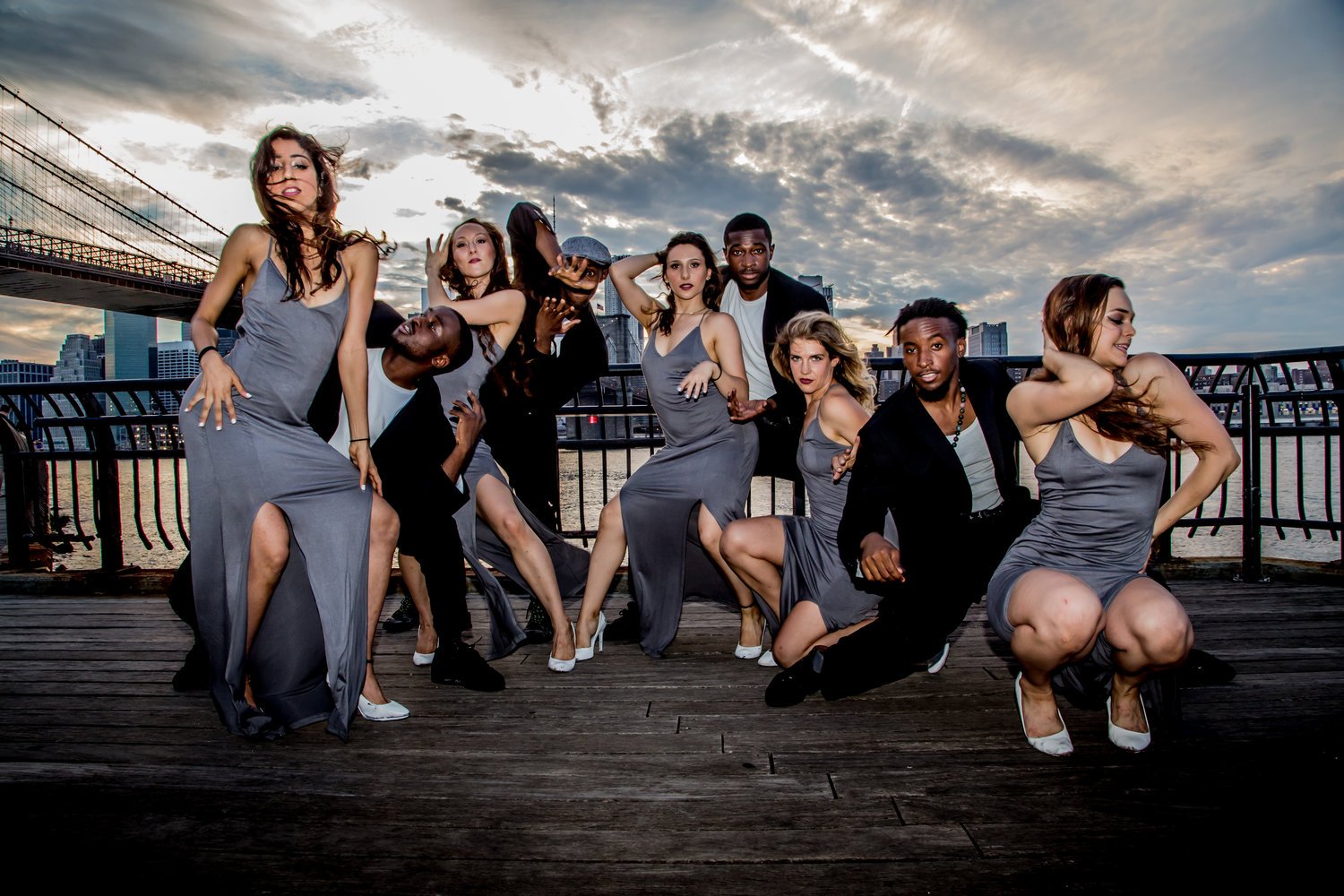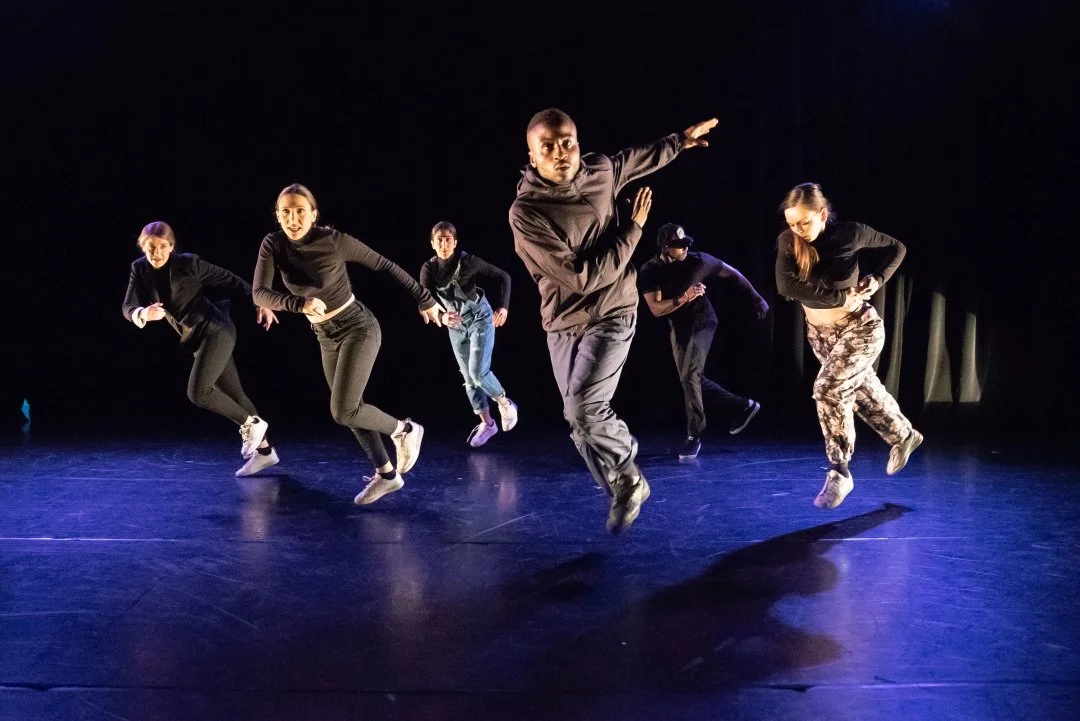“Making Dance Now”: ASTC
“Making Dance Now” is an occasional blog series profiling choreographers and small dance companies to explore the challenges and rewards of creating, producing, and presenting choreography in today’s culture and economy. It’s my hope that this series will spark a dialogue about the importance of dance-making today, and how we can better support choreographers!
The second installment of the “Making Dance Now” blog series features Alternative Synergy The Company (ASTC), a non-profit organization based in Brooklyn, NY. ASTC was assembled with risk in mind: taking artists of all ages, nationalities and backgrounds and merging their arts to create a single story and vision. The company’s mission is to move beyond the conventional by uniting diverse movements, cultures and people to create a new and unique style of art. Alternative Synergy features the strong emotional and cultural histories of street styles with classical ballet and contemporary movements, while creating narrative performances of universal experiences accessible for people of all backgrounds. Principal collaborators include Amanda Spilinga, Founder and Director of Choreography , and Alexandra Varga, Director of Development. Current company members include Spilinga and Varga, along with Hara Zi, Keenen Thomas, and Ladell Thomas.
[youtube https://www.youtube.com/watch?v=bIfqbYI9g70&w=560&h=315]
ASTC emerged organically as a group of NYC-based dancers from different dance backgrounds coming together under the direction of Amanda Spilinga. The roots of the company go back to 2014, when Spilinga was teaching open contemporary classes in Manhattan, while also engaging in the NYC street dance community. These dancers became a family to her, and she sought opportunities to bring these two groups together. As a diverse cohort, ASTC features dancers practicing a range of styles, from popping to litefeet, contemporary to flexing, ballet to house. United by the willingness to get out their comfort zones and challenge themselves, the group eventually found their own voice and started performing as a company. With Spilinga’s direction and choreography, the company performed at several NYC venues and ended 2018 with two sold-out full productions, “ASTC” The Debut” and “ASTC The Debut Part II”.
ASTC’s deep collaboration is exciting and rewarding for both the dancers and the audience, but it has its challenges. Spilinga has worked hard to build a safe and professional environment, in which she mentors individuals with completely different personalities, and takes responsibility for uniting their unique perspectives into a single vision and story in performance. In addition, there are the legal and financial responsibilities associated with running a non-profit performance organization, and the artistic challenge of staying artistically engaged and inspired. She derives the strength and passion to rise to these challenges from the close-knit relationships developed among the dancers throughout the process, and their trust in her vision.
Getting audiences on board with this vision can be challenge in and of itself. Although Spilinga notes that audiences have been receptive to their work, as evidenced from sold-out performance series and a crowdfunding campaign that exceeded its goal. However, the ASTC’s style is not what one typically expects from a dance. Their performances provide something that audiences have not yet seen on stage, which is both appealing and interesting. To help them understand and engage with the company’s unique brand of street styles merged with contemporary forms, they host question and answer sessions after every show, and encourage audience members to express how the performance made them feel. Musicality is a foundational element among the dancers in the company, and their creative process often starts with improvising and freestyling to a track that inspires them. Spilinga uses the terms “research” and “exploration” extensively when describing the company’s process, which provides insight into the rigor with which they work; this early creative play is more than just a jam session. ASTC works close with a music producer throughout the process, which highlights the essential role of music in their productions. Collaboration is key; as Spilinga, production staff, and dancers all work closely and reach decisions based on mutual agreement to ensure that the dancers feel comfortable and confident on stage. This, according to Spilinga, allows them to grow and challenge themselves throughout the process, but also reach the audience in meaningful ways. Communication with the audience is important to ASTC, as the dancers are encouraged to give their full truth with every performance.
Spilinga serves as both executive director and artistic director for the company. In addition to overseeing production and serving as principal choreographer and dancer, she also does much of the financial work, such as running payroll and managing the budget. She admits that the administrative work can impact her creative choices. There is pressure to make decisions based on the administrative and financial obstacles associated with them, rather than the artistic merit. To overcome these challenges, she will often step away for a moment and remember why she started the company in the first place, and does not to compare her administrative choices to someone else’s.
Much of the company’s budget comes from individual donors, such as in a highly successful 2017 crowdfunding campaign. As she strongly believes in compensating dancers for their work, she works extremely hard to provide paid performance opportunities. However, the dancers never pressure her about compensation. In fact, when she found herself pressured by the financial obstacles in the early days of the organization, the dancers were often the ones providing reassurance about the importance of their creative work together, regardless of profit. Some of the company consider themselves “full-time” dancers, while others rely on outside work to pay the bills. In addition to payroll, production is a major expense. ASTC is a self-producing organization, which means they are responsible for venue rental fees, marketing and PR, costumes, and production expenses including costuming and lighting. These financial realities can impact artistic decisions, as Spilinga has to be aware of the budget throughout the creative process.
ASTC relies on direct contact with potential audiences as their primary form of marketing. The company holds workshops, offers lecture-demonstrations, and teaches throughout the city, allowing them to make personal connections with the community. Mentorship and community engagement are important to the company. Members serve not just as dancers, but also as teachers and mentors for young aspiring artists. Kids in particular are drawn to their unique style, which blends the discipline of ballet with the self-expression of street dance. This community engagement, especially with youth, helps to fill the house at their performances. They even have a group of dedicated supporters called the “ASTCLique,” who come to shows, make financial contributions, and regularly attend special events and workshops. Spilinga recognizes that such community support takes time to build. When you are building a company from scratch, you can’t expect immediate recognition. Going out into the community has been a good way to connect with future audiences directly, bypassing some of the costs associated with marketing, and has also been more effective for ASTC than social media or other traditional public relations tools.
Two Minutes with Amanda Spilinga
What advice do you have for companies that are just starting out?
Be extremely patient and do not rush the process and prioritize what works best for you and your team. ASTC developed a very strong vision in collaboration with our members. That vision is our own reality we created when nobody knew about us. Now that our audience expanded and we’ve had more input and advice from outside sources, we have to be honest with ourselves when outside pressures doesn’t align with our vision. It takes time to understand what works for you and taking risk is part of the game, but do not ever suffocate your intuition. Nobody knows your vision more than you. It is natural that you might find yourself in the situation where audience reaction or external collaborators are causing you to question what you are doing. My advice is: do not let this affect you negatively; acknowledge it and respond to it as a chance for you to go even deeper into your creative process. but never allow it to change who you are. When people question you, it is not a step back, but one step forward to strengthen the relationship with yourself and who you really want to be.
Do you consider yourself a “full-time” dance-maker?
Yes, because I have dedicated my entire life to dance, between choreography and education. A career in the arts means 24 hours of work, your mind never stops thinking even when you’re sleeping and inspiration can hit you at the most inconvenient times and you can’t help but acknowledge it.
Connect with ASTC:
Facebook: https://www.facebook.com/AlternativeSynergyTheCompany/
Check our their upcoming performance, Life Symphony: The Origins, May 5th, 2019 at Triskelion Arts, 106 Calyer Street, Brooklyn NY. (More details available on the company’s website!)
Train with ASTC:
Spring Intensive running NOW through May 5th
Summer Intensive July 1 – Aug 3; Registration starts in April.
Learn more here



